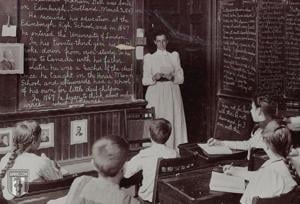It’s been a learning experience and a privilege to study Wheeler. She seemed naturally bright, an organizer, and a friend to all. It appeared her goal was to keep her life simple, get to know your neighbors, and enjoy the wildlife, bears, foxes, chipmunks, woodchucks, and other critters.
Her description The typical house was wood framed with shingles and rustic slabs on the outside, wainscotting, and burlap on the inside walls, with at least one porch. A stone fireplace was necessary on both floors for warmth. Architect Reid designed homes with a rugged stone mantelpiece on either side of the hearth and a balcony over the living area.

The artists’ studios had northern skylights and most of Reid’s houses displayed his murals around the living room. In ordinary cottages, each bedroom had a washstand, furnished with a crockery basin and pitcher, a sloop jar, and a soap dish. Each bathroom contained a zinc tub with a cold-water faucet.
Hot water was brought from the kitchen in watering cans. Homes had earth closets, rather than bathrooms. Twice a week a man, driving mules and called Honey Wagons, came to service the closets.
There were no screens on the doors and windows, but over each bed was a canopy of mosquito netting. Oil lamps were used. Usually, a house was built with one special squirrel-proof room for winter storage of bedding.
Each corner had strips of tin applied to keep out the critters. Bedrooms for the servants were usually on the upper floors. Local merchants.
















